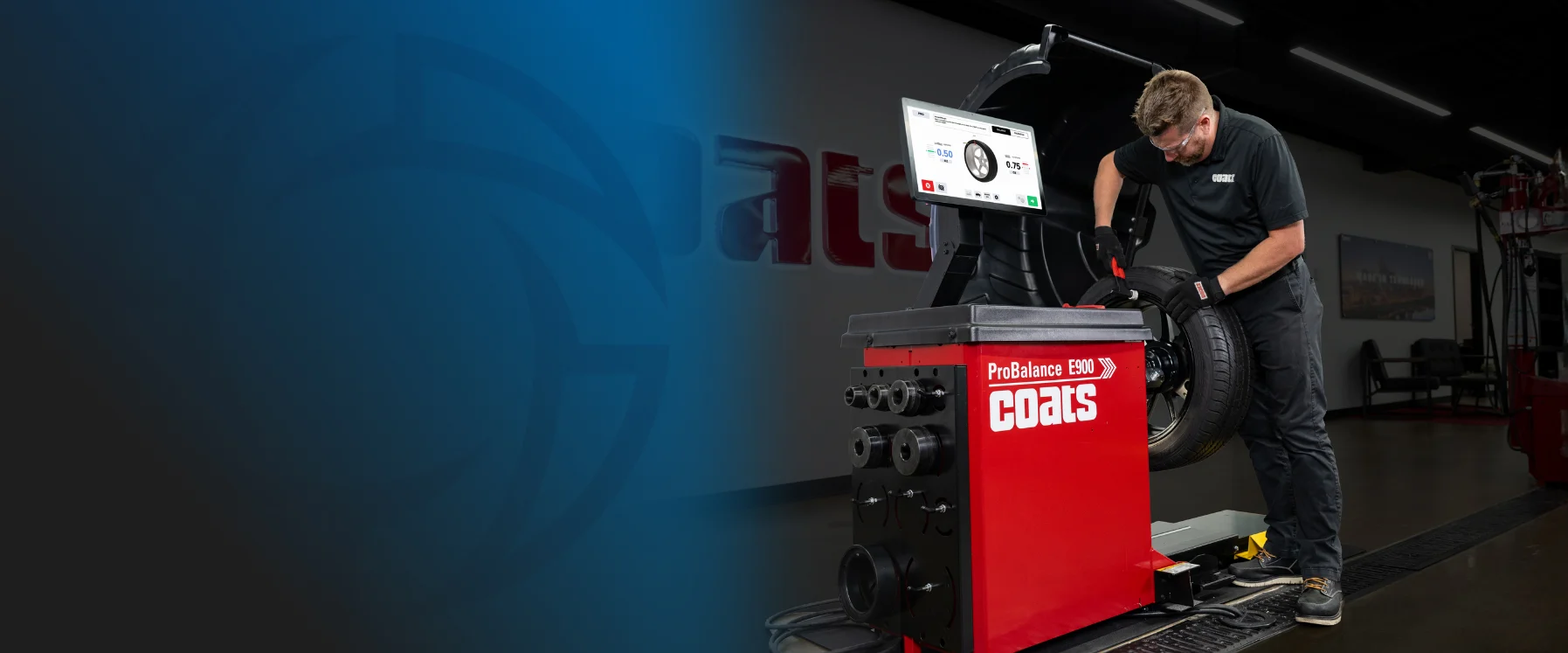- Home /
- Five Considerations For Buying a Wheel Aligner
Five Considerations For Buying a Wheel Aligner
Table of Contents
Offering alignment services can be a fantastic source of income for tire shops, as many customers want to have their vehicle inspected and serviced at the same place where they purchase their newest set of tires. When it comes to maximizing that income potential, a tire dealer’s choice of wheel alignment equipment can make a huge difference.
Today’s wheel aligners are available in a wide variety of sizes and styles and with all sorts of technological features. Here are the top five considerations when choosing the right wheel aligner for your shop.
The good news is that nearly all wheel aligners on the market require 115v of power, so it’s unlikely a shop will need to call an electrician when they install their new equipment. Just make sure the power is available where you plan your installation.
In the past, the size of a shop’s bays was a common limitation for tire dealers looking to add alignment services, but this is less of an issue today. Narrow bays can take advantage of a scissor lift’s compact footprint without sacrificing lifting capacity, and flush mounting an alignment lift is a great way to not only service low-to-the-ground vehicles but also to solve the issue of having short bays. Flush mounting can save as much as 4 feet.
Plus, modern camera systems allow for the aligning of wider vehicles with a turnplate-to-camera distance as small as only 90 inches.
The Coats CWA6500 uses an automatic tracking power camera boom that means even at close camera-to-turn plate distances the Coats CWA6500 is able to quickly get alignment readings on vehicles. To find out if a wheel aligner can fit easily in your shop take the aligner quiz.
No matter the manufacturer, today’s 3D wheel aligners all use some variation of the same technology to measure, and because of this, no modern aligner is any more or less accurate than another. The real differentiator in alignment equipment these days is the software.
A wheel aligner’s software is what makes one simple and intuitive to use and another cumbersome and time-consuming. A perfect example is the “all measurements” screen found on the latest Coats wheel aligner – the CWA 6500 Wheel Aligner – which turns an alignment machine into a full chassis dimensioning tool. Traditionally, measuring a complex chassis angle required an experienced frame technician to make and interpret the measurements. With the “all measurements” screen, getting a full chassis report is now just a few mouse clicks away.
The Coats CWA6500’s software to also incredibly easy to use and quick to learn for new techs and for long-time alignment techs. Shops are up and performing alignments as experts in record time.
Making the most profit on vehicle service is all about maximizing your service opportunities. The more efficient a tire shop’s technicians can be, the more money that shop stands to make. Therefore, tire dealers should be on the lookout for alignment software that has time-saving features to make alignments faster and the alignment bay more productive.
To this end, the CWA 6500 Wheel Aligner features Toe Plus, which makes setting toe and getting a straight steering wheel the first time fast and simple for every technician. The CWA 6500 also features QC-20 tire-gripping wheel clamps, which are fast to set up and never touch cosmetically sensitive wheels, making wheel damage a worry of the past. The equipment’s large, 32-in. monitor can be a huge time saver, too, because technicians can work from the back of a vehicle without the need to walk back and forth to see the screen.
The Coats aligner also allows technicians to use their smartphone as a rear remote and control for the aligner.
When it comes to speed, the automatic tracking power camera beam allows the technician to raise and lower the vehicle on any lift without having to make a separate trip to the aligner to move the cameras.
If you already offer alignment services but haven’t shopped for new equipment in a while, you’ll be amazed at what new technology is packed into the latest wheel alignment models. For instance, look no further than the CWA 6500 Wheel Aligner’s multiple compensation methods.
The first 3D aligners didn’t have this technology and required a technician to roll the vehicle backward and forward while holding the vehicle still in between rolls, while a series of pictures was taken of the targets to measure rolling compensation or caster. The Coats CWA 6500 Wheel Aligner can use its multiple compensation methods for any combination of rolls. This flexibility makes getting to the alignment readings fast and low stress no matter what the vehicle. For any technician or any vehicle, the Coats CWA6500 has a quick and easy way to get to the numbers. Try that with your 5-year-old 3D aligner!
Tire shops don’t have time for downtime. Make sure your equipment is coming from a manufacturer with a trustworthy reputation that offers a solid warranty and stands behind their products.
If service is ever required on a Coats product, the company has a robust team of factory direct service techs with the Coats Service Network that keep Coats equipment up and running for all customers. The company’s service team members are wheel service equipment experts, and they stock a variety of Genuine Coats parts right on the van. A Coats technician is always just a text message or a phone call away.
To learn more about the Coats CWA 6500 Aligner, click here for more information.
US Headquarters
1601 J.P. Hennessy Drive
LaVergne, TN 37086 USA
Sales Inquiries: 855-876-3864
Customer Service: 800-688-6359
Fax: 615-747-2952
Canada
2430 Lucknow Drive, Unit 9
Mississauga, Ontario
L5S 1V3 Canada
Phone: (877) 801-1405
Fax: (905) 672-9455
Related Articles

Meet Coats at SEMA: Moving People and Turning Technology

E900 Wheel Balancer: Key Features That Make It a Shop Workhorse
